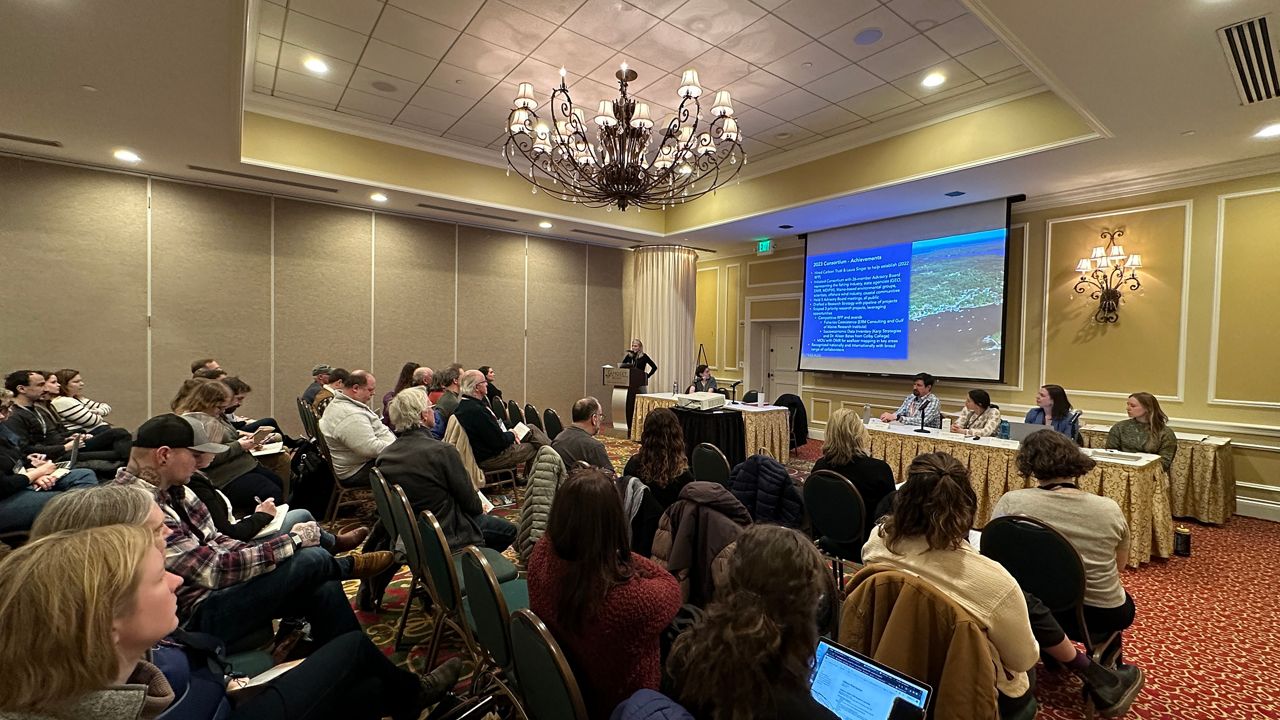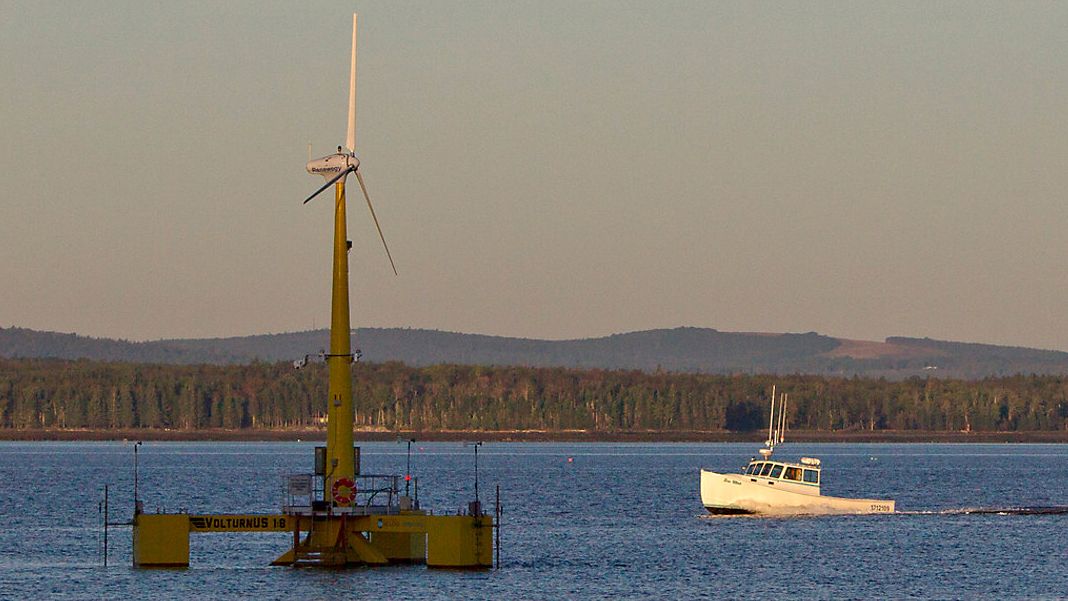Lobstermen asked pointed questions Thursday about a planned offshore floating wind array that they fear will take away fishing grounds and potentially disrupt the species they rely on to make a living.
“Offshore wind overall we have a lot of issues with,” Virginia Olsen, political director of the Maine Lobstering Union said. “We know it will be industrializing our ocean and as fishermen we just don’t want to see that happen.”
Officials from a state consortium that’s working on the planned array presented information at the Maine Fishermen’s Forum, a three-day event in Rockport focusing on the state’s $500 million a year seafood economy.
Consortium officials said they wanted to attend the forum as part of ongoing efforts to reach out to those who may be impacted by the turbines in the Gulf of Maine.
Plans call for a research array of 10 turbines to be placed 40 miles off Portland in federal water. It would be the country’s first floating offshore wind research array, Stephanie Watson of the Governor’s Energy Office told fishermen and others who packed a ballroom at the Samoset Resort.
The state has identified offshore wind as a key component of reaching clean energy goals, which include using 80% renewable energy by 2030, with the intention of reaching 100% by 2040.
“Offshore wind presents a generational economic and energy opportunity for Maine,” according to the Maine Offshore Wind Roadmap. “As an abundant source of clean and renewable energy, offshore wind has the potential to help free Maine from its over-reliance on fossil fuels to lower energy costs and volatility, and to curb climate-altering emissions to protect our state’s environment for future generations.”
Last week, Gov. Janet Mills announced that the state had chosen Sears Island as the preferred site for onshore support for the array, a controversial pick for some environmental groups that wanted to continue to keep development off the site.
As Thursday’s meeting got underway, Meredith Mendelson, deputy commissioner of the Department of Marine Resources, encouraged the fishermen to ask questions.
“This obviously is a topic that has emotional feelings for people in the fishing industry,” she said. “We’re well aware of that.”
For the lobster industry, the prospect of offshore wind comes at a time when they are also working to respond to pressure from environmental groups who say their vertical lines pose a serious risk to endangered right whales.

Earlier this month, regulators determined that a right whale found dead on Martha’s Vineyard in January had been tangled in Maine lobster gear. It’s the first time Maine gear has been linked to the death of one of the whales, which are estimated to number about 360.
During the Thursday presentation, state officials and consultants working on the floating array emphasized they want to work toward “coexistence” between the new technology and the fishing industry.
But that didn’t sit well with some of the lobstermen, who said they don’t want to co-exist with the turbines.
Patrice McCarron, policy director of the Maine Lobstermen’s Association, asked about whether the input from those opposed to the project will continue to be considered.
“A lot of people don’t want to co-exist,” she said. “I think you are really alienating a lot of your stakeholders by asking the question that way. I think it needs to be broader to try to understand what the issues are. If I asked a lot of guys ‘how do you want to coexist’ they’d be like ‘I don’t want to’ and it would seem like you don’t want to hear from them.”
Hannah MacDonald of the Gulf of Maine Research Institute, which will be conducting a lot of the outreach with fishermen, said feedback from opponents will be reported back to state officials.
Lobstermen asked questions about how the turbines will be anchored and what path the cables will take to carry the power to shore. Watson said the cable route has not yet been chosen, but it will likely either connect at the former Maine Yankee site in Wiscasset or at Wyman Station in Yarmouth.
Commercial fisherman Gary Libby said he’s anxious to hear more about the cable and anchoring systems.
“In the future, I’d like to be informed as soon as possible about how they are going to do this stuff,” he said. “From my position, I really am opposed to offshore wind and I think most all the fishermen I know feel the same way. As far as coexistence goes, most guys don’t want to.”



